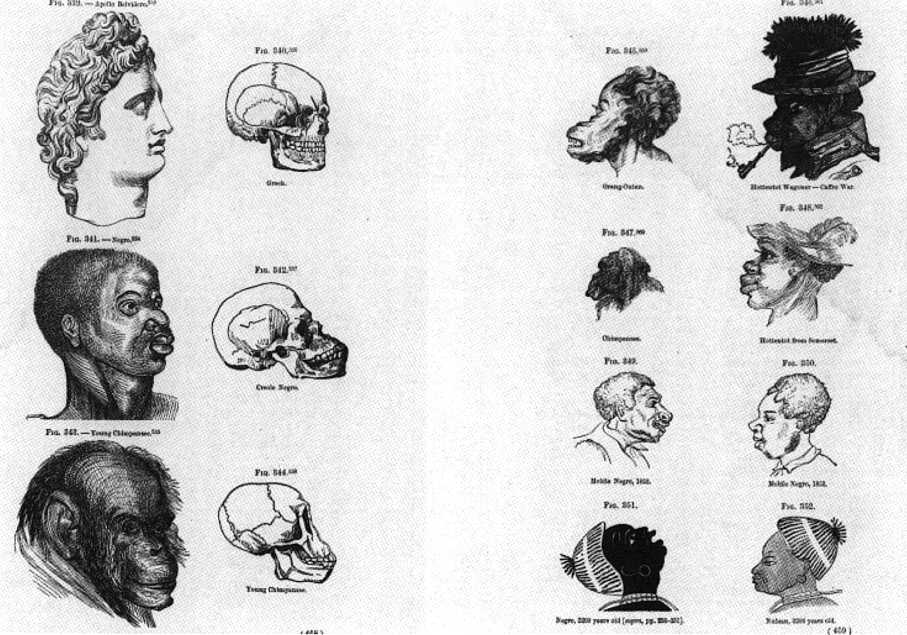"Joseph Cinquez was the leader of a revolt among African slaves aboard the Spanish ship "Amistad" en route to Cuba in June 1839. The slaves seized control of the ship but were soon recaptured and charged with murder and piracy. This portrait was done while Cinquez (or "Cinque") awaited trial in New Haven, Connecticut. John Quincy Adams represented the Africans before the Supreme Court, and thanks to his eloquence, they were set free and allowed to return to Africa."
In 1839, the Spanish slave ship Amistad set sail from Havana to Puerto Principe, Cuba. The ship was carrying 53 Africans who had been abducted from their homeland in present-day Sierra Leone a few months earlier to be sold in Cuba. The captives revolted, killing captain and others, but spared the life of the ship's navigator so they could set a course back to Africa. Instead, the navigator directed them north and west, to be eventually seized a few weeks later by a U. S. Navy vessel off the coast of Long Island. The Africans were transported to New Haven, Connecticut to be tried for mutiny, murder, and piracy.
An engraving of the Amistad revolt.
Two years later in 1841, the Africans were jailed to be tried for murder, mutiny, and piracy. The Amistad, as was came to be known of the Supreme Court case United States v. Libellants and Claimants of the Schooner Amistad, was known for being a freedom suit involving several international issues and parties. including United States law.
The British laid pressure on the court case, saying that they had entered a treaty with Spain prohibiting the slave trade south of the Equator, and considered it a matter of international law that the United States release the Africans.
The Spanish maintained that none but a Spanish court could have jurisdiction over the case. The Spanish minister stated "I do not, in fact, understand how a foreign court of justice can be considered competent to take cognizance of an offence committed on board of a Spanish vessel, by Spanish subjects, and against Spanish subjects, in the waters of a Spanish territory; for it was committed on the coasts of this island, and under the flag of this nation."
The Spaniards held that just as America had ended its importation of African slaves but maintained a legal domestic population, so too had Cuba. It was up to Spanish courts to determine "whether the Negroes in question" were legal or illegal slaves under Spanish law, "but never can this right justly belong to a foreign country."
Among the parties that weighed in on the Supreme Court's decision were abolitionists who advocated for the rights and freedom of the kidnapped Africans, including forming the "Amistad Committee" so that they could raise funds for their defense, as well as finding a translator to communicate with them.
The Supreme Court decision ruled, through Pinckney's Treaty, that the Africans in question were never legal property, and so they were not criminals but "unlawfully kidnapped, and forcibly and wrongfully carried on board a certain vessel." The Africans were ordered free and in 1842 were returned to Africa.
-
details on the court case shown and referred to here.
*
Now what interested me about the
Amistad case was that it was one of a few slave revolts held on a ship, just as it was in
Benito Cereno though about four decades after the event of the book, and that it was around the same time as when Herman Melville was about at sea and about fifteen years before he would publish
Benito Cereno. The court case on the
Amistad would become an influence in the movement to abolish slavery, alongside other successful slave revolts such as the case of the slave ship
Creole in 1841 among numerous other accounts of slave ships accosted and had their slave cargo free.
In Melville's publication of
Benito Cereno, it seemed that he did so while the political climate was in full swing between pro-slavery South and abolitionist North among other politics fraught on the subject of slavery. The choice of having a short story published on a real life event in the past, which also referred to the Haitian Revolution which had happened at the same time of Amasa Delano's deposition, seems to me a deliberate move by Melville to look back to similar events in the past that would resonate with the politics of his present.
Just as in
Benito Cereno, the slave revolts on slave ships were denounced initially as acts of mutinies and piracy, with their court cases winning in favor of the Africans rather than the slave ship captains and whoever was awaiting the cargo. By being seen in a more heroic light, especially among abolitionists, what I wonder is why Melville was bringing up an even that has happened more than fifty years ago from when he published the story. Is it to see the falseness of Delano's deposition and others who had contributed? Or is it to realize that in order for freedom to be attained, violence and craftiness must be employed that defied people's expectations of the Africans?

















